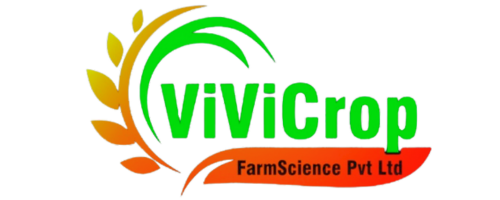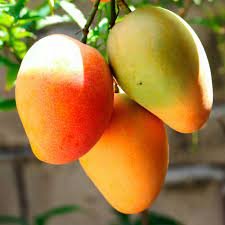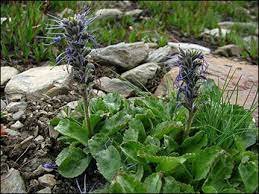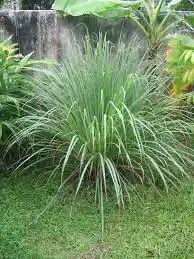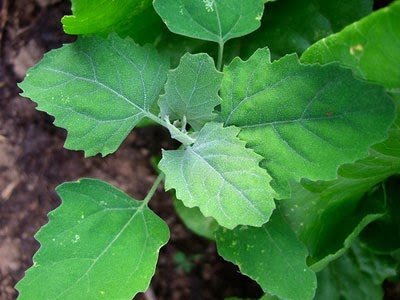Moong Daal Nutrition Requirements
Nutrition required by Moong Daal at each stage of its life cycle.
SOIL PREPARATION

Soil Preparation
Moon dal, also known as mung bean or green gram, is a legume commonly grown for its edible seeds. Here's a general outline of the soil preparation method and nutrition requirements at the soil preparation stage for moon dal:
1. **Soil Preparation Method**:
a. **Site Selection**:
- Choose a well-drained site with loamy or sandy loam soil for moon dal cultivation.
- Ensure good sunlight exposure for optimal growth and development.
b. **Soil Testing**:
- Conduct soil testing to determine the pH and nutrient levels of the soil.
- Adjust soil pH to the optimal range of 6.0 to 7.5 for moon dal cultivation, using lime to raise pH or sulfur to lower pH if necessary.
c. **Land Preparation**:
- Begin land preparation by plowing the field to a depth of 6 to 8 inches to break up soil clods and improve soil aeration.
- Follow plowing with harrowing or discing to further refine the soil texture and create a smooth seedbed.
d. **Weed Control**:
- Prior to planting, control weeds by either manual removal or using herbicides. Ensure that the field is free from weed competition to promote moon dal seedling establishment.
e. **Seedbed Preparation**:
- Create raised beds or ridges if necessary to improve drainage, especially in areas prone to waterlogging.
- Level the seedbed and remove any remaining debris to provide an optimal planting surface for moon dal seeds.
2. **Nutrition Requirement**: Moon dal has relatively low nutrient requirements compared to other crops. However, providing adequate nutrients is essential for healthy plant growth and optimum yield. Here are the key nutrients required:
a. **Nitrogen (N)**:
- Nitrogen is essential for vegetative growth and overall plant development.
- Apply nitrogen fertilizer based on soil test recommendations, typically ranging from 20 to 40 kg/ha depending on soil fertility.
b. **Phosphorus (P)**:
- Phosphorus is important for root development and early growth stages.
- Apply phosphorus fertilizer based on soil test recommendations, typically ranging from 15 to 30 kg/ha.
c. **Potassium (K)**:
- Potassium is essential for flower and seed development.
- Apply potassium fertilizer based on soil test recommendations, typically ranging from 10 to 20 kg/ha.
d. **Micronutrients**:
- While moon dal has low micronutrient requirements, it's important to ensure adequate levels of micronutrients such as zinc, iron, manganese, and copper.
- Incorporate micronutrient-rich organic amendments or apply micronutrient fertilizers if soil tests indicate deficiencies.
e. **Organic Matter**:
- Incorporate organic matter such as compost or well-rotted manure into the soil during preparation to improve soil structure, water retention, and nutrient availability.
Ensure that nutrient application rates are adjusted based on soil test results to avoid over or under-fertilization. Additionally, timely irrigation and weed management are important aspects of soil preparation and crop nutrition for moon dal cultivation.
Early Growth (Germination to Establishment)

Early Growth
During the early growth stage (germination to establishment) of split green gram (moong dal), providing the right nutrients is crucial for healthy seedling development and establishment.
Here are the key nutrients and their requirements during this stage:
1. **Nitrogen (N)**:
- Nitrogen is essential for promoting vigorous vegetative growth and overall plant development during the early stages.
- Apply nitrogen fertilizer based on soil test recommendations or general guidelines, typically ranging from 20 to 40 kg/ha depending on soil fertility.
2. **Phosphorus (P)**:
- Phosphorus plays a vital role in promoting root development and early growth stages of the plant.
- Apply phosphorus fertilizer based on soil test recommendations or general guidelines, typically ranging from 15 to 30 kg/ha.
3. **Potassium (K)**:
- Potassium is important for enhancing plant vigor, disease resistance, and overall growth during the early stages.
- Apply potassium fertilizer based on soil test recommendations or general guidelines, typically ranging from 10 to 20 kg/ha.
4. **Micronutrients**:
- While split green gram has relatively low micronutrient requirements during the early growth stage, ensuring adequate levels of micronutrients such as zinc, iron, manganese, and copper is important for optimal plant growth.
- Incorporate micronutrient-rich organic amendments or apply micronutrient fertilizers if soil tests indicate deficiencies.
5. **Organic Matter**:
- Incorporating organic matter such as compost or well-rotted manure into the soil during preparation or as a side dressing can improve soil structure, water retention, and nutrient availability, promoting healthy seedling growth.
6. **Water**:
- Adequate moisture is critical for successful germination and establishment of split green gram seedlings.
- Ensure consistent soil moisture levels by providing regular irrigation, especially during dry periods, to support seedling emergence and early growth.
7. **pH Adjustment**:
- Ensure that the soil pH is within the optimal range (typically between 6.0 and 7.5) for optimal nutrient availability and uptake by split green gram plants during the early growth stage.
- Adjust soil pH if necessary using lime to raise pH or sulfur to lower pH based on soil test recommendations.
8. **Weed Management**:
- Control weeds effectively during the early growth stage to minimize competition for nutrients, water, and sunlight, which can hinder the growth of split green gram seedlings.
By providing the appropriate nutrients, maintaining optimal soil conditions, and managing weeds effectively, you can support healthy germination and establishment of split green gram seedlings during the early growth stage, ultimately leading to a successful crop.
Tillering Stage (Shoot Development)

Tillering Stage
During the tillering stage (shoot development) of split green gram (moong dal), providing the right nutrients is essential for promoting vigorous vegetative growth and ensuring healthy plant development.
Here are the key nutrients and their requirements during this stage:
1. **Nitrogen (N)**:
- Nitrogen is crucial for promoting lush vegetative growth and tiller development during the tillering stage.
- Apply nitrogen fertilizer based on soil test recommendations or general guidelines, typically ranging from 40 to 60 kg/ha depending on soil fertility.
2. **Phosphorus (P)**:
- Phosphorus is important for promoting root development, flowering, and overall plant growth during the tillering stage.
- Apply phosphorus fertilizer based on soil test recommendations or general guidelines, typically ranging from 30 to 50 kg/ha.
3. **Potassium (K)**:
- Potassium plays a vital role in promoting sturdy stem development, disease resistance, and overall plant vigor during the tillering stage.
- Apply potassium fertilizer based on soil test recommendations or general guidelines, typically ranging from 20 to 40 kg/ha.
4. **Micronutrients**:
- While split green gram has relatively low micronutrient requirements during the tillering stage, ensuring adequate levels of micronutrients such as zinc, iron, manganese, and copper is important for optimal plant growth.
- Incorporate micronutrient-rich organic amendments or apply micronutrient fertilizers if soil tests indicate deficiencies.
5. **Organic Matter**:
- Incorporating organic matter such as compost or well-rotted manure into the soil during preparation or as a side dressing can improve soil structure, water retention, and nutrient availability, promoting healthy shoot development during the tillering stage.
6. **Water**:
- Adequate moisture is critical for promoting vigorous shoot development and tillering in split green gram during the tillering stage.
- Ensure consistent soil moisture levels by providing regular irrigation, especially during dry periods, to support optimal plant growth.
7. **pH Adjustment**:
- Ensure that the soil pH is within the optimal range (typically between 6.0 and 7.5) for optimal nutrient availability and uptake by split green gram plants during the tillering stage.
- Adjust soil pH if necessary using lime to raise pH or sulfur to lower pH based on soil test recommendations.
8. **Weed Management**:
- Control weeds effectively during the tillering stage to minimize competition for nutrients, water, and sunlight, which can hinder the growth of split green gram plants.
By providing the appropriate nutrients, maintaining optimal soil conditions, and managing weeds effectively, you can support healthy shoot development and tillering in split green gram during the tillering stage, ultimately leading to a successful crop.
Flowering

Flowering
During the flowering stage of split green gram (moong dal), providing the right nutrients is crucial for promoting healthy flowering, pod development, and ultimately, optimal yield.
Here are the key nutrients and their requirements during this stage:
1. **Nitrogen (N)**:
- Nitrogen is essential for promoting vigorous vegetative growth, flower formation, and pod development during the flowering stage.
- Apply nitrogen fertilizer based on soil test recommendations or general guidelines, typically ranging from 40 to 60 kg/ha depending on soil fertility.
2. **Phosphorus (P)**:
- Phosphorus is important for promoting strong root development, flower initiation, and seed formation during the flowering stage.
- Apply phosphorus fertilizer based on soil test recommendations or general guidelines, typically ranging from 30 to 50 kg/ha.
3. **Potassium (K)**:
- Potassium plays a vital role in promoting flower and pod development, enhancing disease resistance, and overall plant vigor during the flowering stage.
- Apply potassium fertilizer based on soil test recommendations or general guidelines, typically ranging from 20 to 40 kg/ha.
4. **Micronutrients**:
- While split green gram has relatively low micronutrient requirements during the flowering stage, ensuring adequate levels of micronutrients such as zinc, iron, manganese, and copper is important for optimal flower and pod development.
- Incorporate micronutrient-rich organic amendments or apply micronutrient fertilizers if soil tests indicate deficiencies.
5. **Calcium (Ca)**:
- Calcium is important for cell division, flower formation, and seed development in split green gram during the flowering stage.
- Ensure adequate calcium levels in the soil through proper soil management practices or application of calcium-containing fertilizers if necessary.
6. **Magnesium (Mg)**:
- Magnesium is essential for chlorophyll synthesis, photosynthesis, and overall plant growth during the flowering stage.
- Apply magnesium fertilizer based on soil test recommendations or general guidelines, typically ranging from 10 to 20 kg/ha.
7. **Water**:
- Adequate moisture is critical for promoting healthy flowering, pod development, and seed setting in split green gram during the flowering stage.
- Ensure consistent soil moisture levels by providing regular irrigation, especially during flowering, to support optimal plant growth and development.
8. **pH Adjustment**:
- Ensure that the soil pH is within the optimal range (typically between 6.0 and 7.5) for optimal nutrient availability and uptake by split green gram plants during the flowering stage.
- Adjust soil pH if necessary using lime to raise pH or sulfur to lower pH based on soil test recommendations.
By providing the appropriate nutrients, maintaining optimal soil conditions, and ensuring adequate water availability, you can support healthy flowering, pod development, and ultimately, maximize yield in split green gram during the flowering stage.
Matchuration & Ripening

Matchuration & Ripening
During the maturation and ripening stage of split green gram (moong dal), providing the right nutrients is crucial for promoting healthy pod development, seed maturation, and maximizing yield.
Here are the key nutrients and their requirements during this stage:
1. **Potassium (K)**:
- Potassium is essential for promoting pod development, seed filling, and overall plant vigor during the maturation and ripening stage.
- Apply potassium fertilizer based on soil test recommendations or general guidelines, typically ranging from 20 to 40 kg/ha.
2. **Phosphorus (P)**:
- Phosphorus is important for promoting seed maturation, enhancing seed quality, and overall plant health during the maturation and ripening stage.
- Apply phosphorus fertilizer based on soil test recommendations or general guidelines, typically ranging from 30 to 50 kg/ha.
3. **Calcium (Ca)**:
- Calcium is important for promoting cell wall formation, seed development, and overall plant health during the maturation and ripening stage.
- Ensure adequate calcium levels in the soil through proper soil management practices or application of calcium-containing fertilizers if necessary.
4. **Magnesium (Mg)**:
- Magnesium is essential for chlorophyll synthesis, photosynthesis, and overall plant health during the maturation and ripening stage.
- Apply magnesium fertilizer based on soil test recommendations or general guidelines, typically ranging from 10 to 20 kg/ha.
5. **Sulfur (S)**:
- Sulfur is important for protein synthesis, seed quality, and overall plant health during the maturation and ripening stage.
- Apply sulfur fertilizer based on soil test recommendations or general guidelines, typically ranging from 10 to 20 kg/ha.
6. **Micronutrients**:
- Ensure adequate levels of micronutrients such as zinc, iron, manganese, and copper for optimal seed development, quality, and overall plant health during the maturation and ripening stage.
- Incorporate micronutrient-rich organic amendments or apply micronutrient fertilizers if soil tests indicate deficiencies.
7. **Water**:
- Adequate moisture is critical for promoting healthy pod development, seed filling, and maturation in split green gram during the maturation and ripening stage.
- Ensure consistent soil moisture levels by providing regular irrigation, especially during pod filling and maturation, to support optimal plant growth and seed development.
8. **Harvest Timing**:
- Harvest split green gram pods when they have fully matured and turned brown or yellow, depending on the variety. Delayed harvesting can lead to seed shattering and yield loss.
By providing the appropriate nutrients, maintaining optimal soil conditions, and ensuring adequate water availability, you can support healthy pod development, seed maturation, and maximize yield in split green gram during the maturation and ripening stage.
Harvesting

Harvesting
During the harvesting stage of red lentils, while specific nutrient requirements are less critical compared to other growth stages, ensuring proper procedures are followed is essential to maintain seed quality and maximize yield.
Here are the key considerations for nutrition requirements and procedures at the harvesting stage for red lentils:
1. **Nutrition Requirement**:
- While red lentils primarily focus on seed development and maturation during the harvesting stage, ensuring adequate soil fertility throughout the growing season contributes to overall plant health and seed quality.
- Key nutrients such as potassium (K), phosphorus (P), calcium (Ca), magnesium (Mg), sulfur (S), and micronutrients should be maintained at appropriate levels to support optimal seed development, maturation, and yield.
2. **Harvesting Procedure**:
a. **Timing**: Harvest red lentils when the majority of pods have turned brown and dry, and the seeds are firm to the touch. Delaying harvest may result in shattering and seed loss.
b. **Equipment**: Use a combine harvester equipped with a flexible header or pickup attachment suitable for lentil crops. Ensure the equipment is properly adjusted to minimize seed damage and loss.
c. **Cutting Height**: Adjust the cutting height of the combine header to leave a stubble height of around 4 to 6 inches. This helps prevent soil contamination and facilitates subsequent tillage operations.
d. **Threshing and Separation**: Ensure thorough threshing and separation of seeds from pods to minimize seed loss and maintain seed quality. Adjust combine settings as needed for optimal threshing and separation efficiency.
e. **Cleaning**: Clean harvested seeds to remove any remaining debris, chaff, or foreign material using a seed cleaner or air-screen cleaner. Proper cleaning improves seed quality and marketability.
f. **Drying (if necessary)**: If harvested seeds have high moisture content, consider drying them to reduce moisture levels to safe storage levels (usually around 10-12%). Use a grain dryer or natural air drying method to prevent mold growth and maintain seed viability during storage.
g. **Storage**: Store harvested seeds in clean, dry, and well-ventilated storage facilities such as silos, bins, or grain bags. Monitor stored seeds regularly for signs of pests or moisture buildup to maintain seed quality.
Following these procedures and ensuring proper equipment maintenance and adjustment at the harvesting stage for red lentils contributes to a successful harvest with high-quality seeds, ultimately maximizing yield and profitability. Additionally, regular soil testing and appropriate fertilization practices throughout the growing season help meet the crop's nutritional needs and optimize yield potential.
Moong Daal Farming Economics
Get details of Profitability and cost estimate in growing Moong Daal per acres of Land.
SOIL PREPARATION

Soil Preparation
Soil preparation is a crucial step in wheat cultivation, as it directly affects the crop's growth and yield. Here are the soil preparation methods and nutrition requirements at the soil preparation stage for wheat:
Soil Preparation Method:
Land Preparation: Plow the field to break the soil and turn it over. Use a disc harrow or cultivator to further break down clods and level the soil. Ensure proper seedbed preparation by creating a fine, well-tilled soil surface.
Seedbed Preparation: Level the field to provide a uniform surface for planting. Use a roller or a harrow to firm up the soil to facilitate seed-to-soil contact. Remove any weeds or crop residues from the previous season to reduce competition with the wheat crop.
Seed Rate and Sowing: Determine the appropriate seed rate based on the variety and local recommendations. Use a suitable seed drill for uniform and precise sowing. Ensure proper seed depth according to recommended guidelines.
Fertilization: Apply a balanced fertilizer based on soil nutrient analysis and regional recommendations. Incorporate fertilizers into the soil during seedbed preparation. Consider applying phosphorus and potassium along with nitrogen for optimal wheat growth.
Organic Matter: Incorporate well-rotted organic matter, such as compost or manure, into the soil. Organic matter enhances soil structure, water retention, and nutrient availability.
pH Adjustment: Check and adjust soil pH to the recommended range for wheat cultivation (typically around 6.0 to 7.5). Lime may be added to raise pH, and sulfur may be added to lower pH as needed.
Nutrition Requirement at Soil Preparation Stage: Nitrogen (N): Nitrogen is essential for vegetative growth and is crucial during the early stages of wheat development. Apply nitrogen fertilizer during soil preparation to provide an initial boost to the crop.
Phosphorus (P): Phosphorus is vital for root development and early plant establishment. Apply phosphorus-containing fertilizers, such as diammonium phosphate (DAP), during soil preparation.
Potassium (K): Potassium supports overall plant health, disease resistance, and drought tolerance. Apply potassium-containing fertilizers, such as potassium chloride (Muriate of Potash), during soil preparation.
Micronutrients: Consider incorporating micronutrients like zinc, copper, and boron based on soil testing results. Micronutrients play essential roles in enzyme activities and overall plant health.
Organic Matter: Organic matter contributes to nutrient availability and improves the soil's water-holding capacity. Ensure a good supply of organic matter through the incorporation of well-decomposed compost or manure.
Soil pH: Adjust soil pH to the recommended range for wheat cultivation to optimize nutrient uptake by the plants.
Microbial Activity: Encourage beneficial microbial activity in the soil by incorporating organic matter. Healthy soil microbial communities contribute to nutrient cycling and availability.
Water Management: Ensure proper drainage to prevent waterlogging, which can negatively impact nutrient uptake. Irrigate if necessary to maintain adequate soil moisture during wheat establishment.
Early Growth (Germination to Establishment)

Early Growth
Soil preparation is a crucial step in wheat cultivation, as it directly affects the crop's growth and yield. Here are the soil preparation methods and nutrition requirements at the soil preparation stage for wheat:
Soil Preparation Method:
Land Preparation: Plow the field to break the soil and turn it over. Use a disc harrow or cultivator to further break down clods and level the soil. Ensure proper seedbed preparation by creating a fine, well-tilled soil surface.
Seedbed Preparation: Level the field to provide a uniform surface for planting. Use a roller or a harrow to firm up the soil to facilitate seed-to-soil contact. Remove any weeds or crop residues from the previous season to reduce competition with the wheat crop.
Seed Rate and Sowing: Determine the appropriate seed rate based on the variety and local recommendations. Use a suitable seed drill for uniform and precise sowing. Ensure proper seed depth according to recommended guidelines.
Fertilization: Apply a balanced fertilizer based on soil nutrient analysis and regional recommendations. Incorporate fertilizers into the soil during seedbed preparation. Consider applying phosphorus and potassium along with nitrogen for optimal wheat growth.
Organic Matter: Incorporate well-rotted organic matter, such as compost or manure, into the soil. Organic matter enhances soil structure, water retention, and nutrient availability.
pH Adjustment: Check and adjust soil pH to the recommended range for wheat cultivation (typically around 6.0 to 7.5). Lime may be added to raise pH, and sulfur may be added to lower pH as needed.
Nutrition Requirement at Soil Preparation Stage: Nitrogen (N): Nitrogen is essential for vegetative growth and is crucial during the early stages of wheat development. Apply nitrogen fertilizer during soil preparation to provide an initial boost to the crop.
Phosphorus (P): Phosphorus is vital for root development and early plant establishment. Apply phosphorus-containing fertilizers, such as diammonium phosphate (DAP), during soil preparation.
Potassium (K): Potassium supports overall plant health, disease resistance, and drought tolerance. Apply potassium-containing fertilizers, such as potassium chloride (Muriate of Potash), during soil preparation.
Micronutrients: Consider incorporating micronutrients like zinc, copper, and boron based on soil testing results. Micronutrients play essential roles in enzyme activities and overall plant health.
Organic Matter: Organic matter contributes to nutrient availability and improves the soil's water-holding capacity. Ensure a good supply of organic matter through the incorporation of well-decomposed compost or manure.
Soil pH: Adjust soil pH to the recommended range for wheat cultivation to optimize nutrient uptake by the plants.
Microbial Activity: Encourage beneficial microbial activity in the soil by incorporating organic matter. Healthy soil microbial communities contribute to nutrient cycling and availability.
Water Management: Ensure proper drainage to prevent waterlogging, which can negatively impact nutrient uptake. Irrigate if necessary to maintain adequate soil moisture during wheat establishment.
Tillering Stage (Shoot Development)

Tillering Stage
Soil preparation is a crucial step in wheat cultivation, as it directly affects the crop's growth and yield. Here are the soil preparation methods and nutrition requirements at the soil preparation stage for wheat:
Soil Preparation Method:
Land Preparation: Plow the field to break the soil and turn it over. Use a disc harrow or cultivator to further break down clods and level the soil. Ensure proper seedbed preparation by creating a fine, well-tilled soil surface.
Seedbed Preparation: Level the field to provide a uniform surface for planting. Use a roller or a harrow to firm up the soil to facilitate seed-to-soil contact. Remove any weeds or crop residues from the previous season to reduce competition with the wheat crop.
Seed Rate and Sowing: Determine the appropriate seed rate based on the variety and local recommendations. Use a suitable seed drill for uniform and precise sowing. Ensure proper seed depth according to recommended guidelines.
Fertilization: Apply a balanced fertilizer based on soil nutrient analysis and regional recommendations. Incorporate fertilizers into the soil during seedbed preparation. Consider applying phosphorus and potassium along with nitrogen for optimal wheat growth.
Organic Matter: Incorporate well-rotted organic matter, such as compost or manure, into the soil. Organic matter enhances soil structure, water retention, and nutrient availability.
pH Adjustment: Check and adjust soil pH to the recommended range for wheat cultivation (typically around 6.0 to 7.5). Lime may be added to raise pH, and sulfur may be added to lower pH as needed.
Nutrition Requirement at Soil Preparation Stage: Nitrogen (N): Nitrogen is essential for vegetative growth and is crucial during the early stages of wheat development. Apply nitrogen fertilizer during soil preparation to provide an initial boost to the crop.
Phosphorus (P): Phosphorus is vital for root development and early plant establishment. Apply phosphorus-containing fertilizers, such as diammonium phosphate (DAP), during soil preparation.
Potassium (K): Potassium supports overall plant health, disease resistance, and drought tolerance. Apply potassium-containing fertilizers, such as potassium chloride (Muriate of Potash), during soil preparation.
Micronutrients: Consider incorporating micronutrients like zinc, copper, and boron based on soil testing results. Micronutrients play essential roles in enzyme activities and overall plant health.
Organic Matter: Organic matter contributes to nutrient availability and improves the soil's water-holding capacity. Ensure a good supply of organic matter through the incorporation of well-decomposed compost or manure.
Soil pH: Adjust soil pH to the recommended range for wheat cultivation to optimize nutrient uptake by the plants.
Microbial Activity: Encourage beneficial microbial activity in the soil by incorporating organic matter. Healthy soil microbial communities contribute to nutrient cycling and availability.
Water Management: Ensure proper drainage to prevent waterlogging, which can negatively impact nutrient uptake. Irrigate if necessary to maintain adequate soil moisture during wheat establishment.
Flowering

Flowering
Soil preparation is a crucial step in wheat cultivation, as it directly affects the crop's growth and yield. Here are the soil preparation methods and nutrition requirements at the soil preparation stage for wheat:
Soil Preparation Method:
Land Preparation: Plow the field to break the soil and turn it over. Use a disc harrow or cultivator to further break down clods and level the soil. Ensure proper seedbed preparation by creating a fine, well-tilled soil surface.
Seedbed Preparation: Level the field to provide a uniform surface for planting. Use a roller or a harrow to firm up the soil to facilitate seed-to-soil contact. Remove any weeds or crop residues from the previous season to reduce competition with the wheat crop.
Seed Rate and Sowing: Determine the appropriate seed rate based on the variety and local recommendations. Use a suitable seed drill for uniform and precise sowing. Ensure proper seed depth according to recommended guidelines.
Fertilization: Apply a balanced fertilizer based on soil nutrient analysis and regional recommendations. Incorporate fertilizers into the soil during seedbed preparation. Consider applying phosphorus and potassium along with nitrogen for optimal wheat growth.
Organic Matter: Incorporate well-rotted organic matter, such as compost or manure, into the soil. Organic matter enhances soil structure, water retention, and nutrient availability.
pH Adjustment: Check and adjust soil pH to the recommended range for wheat cultivation (typically around 6.0 to 7.5). Lime may be added to raise pH, and sulfur may be added to lower pH as needed.
Nutrition Requirement at Soil Preparation Stage: Nitrogen (N): Nitrogen is essential for vegetative growth and is crucial during the early stages of wheat development. Apply nitrogen fertilizer during soil preparation to provide an initial boost to the crop.
Phosphorus (P): Phosphorus is vital for root development and early plant establishment. Apply phosphorus-containing fertilizers, such as diammonium phosphate (DAP), during soil preparation.
Potassium (K): Potassium supports overall plant health, disease resistance, and drought tolerance. Apply potassium-containing fertilizers, such as potassium chloride (Muriate of Potash), during soil preparation.
Micronutrients: Consider incorporating micronutrients like zinc, copper, and boron based on soil testing results. Micronutrients play essential roles in enzyme activities and overall plant health.
Organic Matter: Organic matter contributes to nutrient availability and improves the soil's water-holding capacity. Ensure a good supply of organic matter through the incorporation of well-decomposed compost or manure.
Soil pH: Adjust soil pH to the recommended range for wheat cultivation to optimize nutrient uptake by the plants.
Microbial Activity: Encourage beneficial microbial activity in the soil by incorporating organic matter. Healthy soil microbial communities contribute to nutrient cycling and availability.
Water Management: Ensure proper drainage to prevent waterlogging, which can negatively impact nutrient uptake. Irrigate if necessary to maintain adequate soil moisture during wheat establishment.
Matchuration & Ripening

Matchuration & Ripening
Soil preparation is a crucial step in wheat cultivation, as it directly affects the crop's growth and yield. Here are the soil preparation methods and nutrition requirements at the soil preparation stage for wheat:
Soil Preparation Method:
Land Preparation: Plow the field to break the soil and turn it over. Use a disc harrow or cultivator to further break down clods and level the soil. Ensure proper seedbed preparation by creating a fine, well-tilled soil surface.
Seedbed Preparation: Level the field to provide a uniform surface for planting. Use a roller or a harrow to firm up the soil to facilitate seed-to-soil contact. Remove any weeds or crop residues from the previous season to reduce competition with the wheat crop.
Seed Rate and Sowing: Determine the appropriate seed rate based on the variety and local recommendations. Use a suitable seed drill for uniform and precise sowing. Ensure proper seed depth according to recommended guidelines.
Fertilization: Apply a balanced fertilizer based on soil nutrient analysis and regional recommendations. Incorporate fertilizers into the soil during seedbed preparation. Consider applying phosphorus and potassium along with nitrogen for optimal wheat growth.
Organic Matter: Incorporate well-rotted organic matter, such as compost or manure, into the soil. Organic matter enhances soil structure, water retention, and nutrient availability.
pH Adjustment: Check and adjust soil pH to the recommended range for wheat cultivation (typically around 6.0 to 7.5). Lime may be added to raise pH, and sulfur may be added to lower pH as needed.
Nutrition Requirement at Soil Preparation Stage: Nitrogen (N): Nitrogen is essential for vegetative growth and is crucial during the early stages of wheat development. Apply nitrogen fertilizer during soil preparation to provide an initial boost to the crop.
Phosphorus (P): Phosphorus is vital for root development and early plant establishment. Apply phosphorus-containing fertilizers, such as diammonium phosphate (DAP), during soil preparation.
Potassium (K): Potassium supports overall plant health, disease resistance, and drought tolerance. Apply potassium-containing fertilizers, such as potassium chloride (Muriate of Potash), during soil preparation.
Micronutrients: Consider incorporating micronutrients like zinc, copper, and boron based on soil testing results. Micronutrients play essential roles in enzyme activities and overall plant health.
Organic Matter: Organic matter contributes to nutrient availability and improves the soil's water-holding capacity. Ensure a good supply of organic matter through the incorporation of well-decomposed compost or manure.
Soil pH: Adjust soil pH to the recommended range for wheat cultivation to optimize nutrient uptake by the plants.
Microbial Activity: Encourage beneficial microbial activity in the soil by incorporating organic matter. Healthy soil microbial communities contribute to nutrient cycling and availability.
Water Management: Ensure proper drainage to prevent waterlogging, which can negatively impact nutrient uptake. Irrigate if necessary to maintain adequate soil moisture during wheat establishment.
Harvesting

Harvesting
Soil preparation is a crucial step in wheat cultivation, as it directly affects the crop's growth and yield. Here are the soil preparation methods and nutrition requirements at the soil preparation stage for wheat:
Soil Preparation Method:
Land Preparation: Plow the field to break the soil and turn it over. Use a disc harrow or cultivator to further break down clods and level the soil. Ensure proper seedbed preparation by creating a fine, well-tilled soil surface.
Seedbed Preparation: Level the field to provide a uniform surface for planting. Use a roller or a harrow to firm up the soil to facilitate seed-to-soil contact. Remove any weeds or crop residues from the previous season to reduce competition with the wheat crop.
Seed Rate and Sowing: Determine the appropriate seed rate based on the variety and local recommendations. Use a suitable seed drill for uniform and precise sowing. Ensure proper seed depth according to recommended guidelines.
Fertilization: Apply a balanced fertilizer based on soil nutrient analysis and regional recommendations. Incorporate fertilizers into the soil during seedbed preparation. Consider applying phosphorus and potassium along with nitrogen for optimal wheat growth.
Organic Matter: Incorporate well-rotted organic matter, such as compost or manure, into the soil. Organic matter enhances soil structure, water retention, and nutrient availability.
pH Adjustment: Check and adjust soil pH to the recommended range for wheat cultivation (typically around 6.0 to 7.5). Lime may be added to raise pH, and sulfur may be added to lower pH as needed.
Nutrition Requirement at Soil Preparation Stage: Nitrogen (N): Nitrogen is essential for vegetative growth and is crucial during the early stages of wheat development. Apply nitrogen fertilizer during soil preparation to provide an initial boost to the crop.
Phosphorus (P): Phosphorus is vital for root development and early plant establishment. Apply phosphorus-containing fertilizers, such as diammonium phosphate (DAP), during soil preparation.
Potassium (K): Potassium supports overall plant health, disease resistance, and drought tolerance. Apply potassium-containing fertilizers, such as potassium chloride (Muriate of Potash), during soil preparation.
Micronutrients: Consider incorporating micronutrients like zinc, copper, and boron based on soil testing results. Micronutrients play essential roles in enzyme activities and overall plant health.
Organic Matter: Organic matter contributes to nutrient availability and improves the soil's water-holding capacity. Ensure a good supply of organic matter through the incorporation of well-decomposed compost or manure.
Soil pH: Adjust soil pH to the recommended range for wheat cultivation to optimize nutrient uptake by the plants.
Microbial Activity: Encourage beneficial microbial activity in the soil by incorporating organic matter. Healthy soil microbial communities contribute to nutrient cycling and availability.
Water Management: Ensure proper drainage to prevent waterlogging, which can negatively impact nutrient uptake. Irrigate if necessary to maintain adequate soil moisture during wheat establishment.
Moong Daal Disease Details
Nutrition required by Moong Daal at each stage of its life cycle.
SOIL PREPARATION

Soil Preparation
During the soil preparation stage for split green gram cultivation, several diseases and pests can occur. Some common diseases include:
1. **Damping-off**: This disease is caused by various fungi and can lead to the rotting of seeds and seedlings, resulting in poor germination and plant death.
2. **Root rot**: Caused by fungi such as Fusarium and Rhizoctonia, root rot affects the roots of the plants, leading to wilting, stunting, and eventual death of the plants.
3. **Leaf spot**: Fungal pathogens can cause leaf spot diseases, resulting in the development of spots on leaves, which can eventually lead to defoliation and reduced yield.
4. **Powdery mildew**: Powdery mildew is a fungal disease that appears as a white powdery substance on the leaves, stems, and pods of the plants, affecting photosynthesis and reducing yield.
To prevent these diseases and pests during the soil preparation stage and throughout the cultivation process, several precautions can be followed:
1. **Field sanitation**: Remove and destroy any crop residues and weeds from the field before planting to reduce the buildup of pathogens and pests.
2. **Seed treatment**: Treat seeds with fungicides before planting to protect them from soil-borne pathogens and improve germination rates.
3. **Soil solarization**: This process involves covering the soil with transparent plastic to trap heat and kill pathogens, pests, and weed seeds present in the soil.
4. **Crop rotation**: Rotate split green gram with non-leguminous crops to break disease cycles and reduce the buildup of soil-borne pathogens specific to split green gram.
5. **Proper drainage**: Ensure proper drainage in the field to prevent waterlogging, which can create favorable conditions for the development of soil-borne diseases.
6. **Healthy seedlings**: Use healthy and disease-free seedlings for planting to reduce the risk of introducing diseases into the field.
7. **Integrated Pest Management (IPM)**: Implement IPM practices such as monitoring for pests and diseases, using resistant varieties, and employing biological control agents to manage pest and disease populations effectively.
8. **Proper irrigation**: Avoid overwatering, as excessive moisture in the soil can promote the development of certain soil-borne diseases.
9. **Avoiding water stagnation**: Ensure proper land leveling and contouring to avoid water stagnation, which can create conditions conducive to disease development.
By following these precautions, farmers can minimize the risk of diseases and pests during the soil preparation stage and ensure a healthier split green gram crop.
Early Growth (Germination to Establishment)

Early Growing
During the early growth stage of moong dal (mung bean) from germination to establishment, several diseases and pests can occur. Some common diseases at this stage include:
1. **Damping-off**: Damping-off is caused by various fungi and affects seedlings, leading to rotting of seeds and seedlings, resulting in poor germination and plant death.
2. **Root rot**: Root rot, caused by fungi such as Rhizoctonia and Fusarium, affects the roots of young plants, leading to wilting, stunting, and eventual death.
3. **Leaf spot**: Leaf spot diseases caused by fungal pathogens result in the development of spots on leaves, which can lead to defoliation and reduced yield.
4. **Powdery mildew**: Powdery mildew, a fungal disease, appears as a white powdery substance on leaves, stems, and pods, affecting photosynthesis and yield.
To prevent these diseases and pests during the early growth stage of moong dal, several precautions can be followed:
1. **Seed treatment**: Treat seeds with fungicides before planting to protect them from soil-borne pathogens and improve germination rates.
2. **Field sanitation**: Remove and destroy crop residues and weeds from the field before planting to reduce the buildup of pathogens and pests.
3. **Proper seedbed preparation**: Ensure proper seedbed preparation, including soil drainage and leveling, to prevent waterlogging and create optimal conditions for germination and establishment.
4. **Crop rotation**: Rotate moong dal with non-leguminous crops to break disease cycles and reduce the buildup of soil-borne pathogens specific to moong dal.
5. **Use of disease-resistant varieties**: Plant disease-resistant moong dal varieties to minimize the risk of disease outbreaks.
6. **Integrated Pest Management (IPM)**: Implement IPM practices such as monitoring for pests and diseases, using biological control agents, and practicing cultural controls to manage pest and disease populations effectively.
7. **Proper irrigation**: Avoid overwatering, as excessive soil moisture can promote the development of certain diseases.
8. **Proper spacing**: Plant moong dal seeds at the recommended spacing to ensure adequate air circulation and reduce the risk of diseases favored by high humidity.
9. **Early detection and management**: Regularly monitor the crop for signs of diseases and pests, and take appropriate management actions, such as applying fungicides or insecticides when necessary.
By following these precautions, farmers can minimize the risk of diseases and pests during the early growth stage of moong dal and promote healthier plant establishment and growth.
Tillering Stage (Shoot Development)

Tillering Stage
During the tillering stage (shoot development) of split green gram (mung bean), several diseases and pests can occur. Some common diseases at this stage include:
1. **Anthracnose**: Anthracnose is a fungal disease caused by Colletotrichum species. It affects leaves, stems, and pods, causing dark lesions and reducing yield.
2. **Powdery mildew**: Powdery mildew, caused by fungal pathogens, appears as a white powdery substance on leaves, stems, and pods, affecting photosynthesis and yield.
3. **Leaf spot**: Leaf spot diseases, caused by various fungal pathogens, result in the development of spots on leaves, which can lead to defoliation and reduced yield.
4. **Root rot**: Root rot, caused by fungi such as Rhizoctonia and Fusarium, affects the roots of plants, leading to wilting, stunting, and eventual death.
Pests such as aphids, whiteflies, and thrips can also infest split green gram during the tillering stage, feeding on plant sap and transmitting viruses.
To prevent these diseases and pests during the tillering stage of split green gram, several precautions can be followed:
1. **Field sanitation**: Remove and destroy crop residues and weeds from the field to reduce the buildup of pathogens and pests.
2. **Crop rotation**: Rotate split green gram with non-leguminous crops to break disease cycles and reduce the buildup of soil-borne pathogens specific to split green gram.
3. **Use of disease-resistant varieties**: Plant split green gram varieties that are resistant to common diseases prevalent in the area.
4. **Proper irrigation**: Avoid overwatering, as excessive soil moisture can promote the development of certain diseases.
5. **Integrated Pest Management (IPM)**: Implement IPM practices such as monitoring for pests and diseases, using biological control agents, and practicing cultural controls to manage pest and disease populations effectively.
6. **Proper spacing**: Plant split green gram seeds at the recommended spacing to ensure adequate air circulation and reduce the risk of diseases favored by high humidity.
7. **Fungicide application**: Apply fungicides preventively or curatively as per recommended guidelines to control fungal diseases.
8. **Early detection and management**: Regularly monitor the crop for signs of diseases and pests, and take appropriate management actions, such as applying insecticides or fungicides when necessary.
By following these precautions, farmers can minimize the risk of diseases and pests during the tillering stage of split green gram and promote healthier plant development and yield.
Flowering

Flowering
During the flowering stage of split green gram (mung bean), several diseases and pests can occur. Some common diseases at this stage include:
1. **Anthracnose**: Anthracnose, caused by Colletotrichum species, affects leaves, stems, and pods, causing dark lesions and reducing yield.
2. **Powdery mildew**: Powdery mildew, caused by fungal pathogens, appears as a white powdery substance on leaves, stems, and pods, affecting photosynthesis and yield.
3. **Leaf spot**: Leaf spot diseases, caused by various fungal pathogens, result in the development of spots on leaves, which can lead to defoliation and reduced yield.
4. **Pod blight**: Pod blight, caused by fungal pathogens such as Botrytis and Phomopsis, affects pods, causing rotting and reduced yield.
Pests such as aphids, whiteflies, and thrips can also infest split green gram during the flowering stage, feeding on plant sap and transmitting viruses.
To prevent these diseases and pests during the flowering stage of split green gram, several precautions can be followed:
1. **Field sanitation**: Remove and destroy crop residues and weeds from the field to reduce the buildup of pathogens and pests.
2. **Crop rotation**: Rotate split green gram with non-leguminous crops to break disease cycles and reduce the buildup of soil-borne pathogens specific to split green gram.
3. **Use of disease-resistant varieties**: Plant split green gram varieties that are resistant to common diseases prevalent in the area.
4. **Proper irrigation**: Avoid overwatering, as excessive soil moisture can promote the development of certain diseases.
5. **Integrated Pest Management (IPM)**: Implement IPM practices such as monitoring for pests and diseases, using biological control agents, and practicing cultural controls to manage pest and disease populations effectively.
6. **Proper spacing**: Plant split green gram seeds at the recommended spacing to ensure adequate air circulation and reduce the risk of diseases favored by high humidity.
7. **Fungicide application**: Apply fungicides preventively or curatively as per recommended guidelines to control fungal diseases.
8. **Early detection and management**: Regularly monitor the crop for signs of diseases and pests, and take appropriate management actions, such as applying insecticides or fungicides when necessary.
By following these precautions, farmers can minimize the risk of diseases and pests during the flowering stage of split green gram and promote healthier plant development and yield.
Matchuration & Ripening

Matchuration & Ripening
During the maturation and ripening stage of split green gram (mung bean), several diseases and pests can occur. Some common diseases at this stage include:
1. **Pod rot**: Pod rot diseases, caused by various fungal pathogens such as Botrytis and Phomopsis, affect the pods of split green gram, causing rotting and reducing yield.
2. **Anthracnose**: Anthracnose, caused by Colletotrichum species, can continue to affect pods during the maturation stage, causing dark lesions and reducing yield.
3. **Powdery mildew**: Powdery mildew, caused by fungal pathogens, may persist on leaves, stems, and pods during maturation, affecting photosynthesis and yield.
Pests such as pod borers, pod suckers, and bruchid beetles can also infest split green gram during the maturation and ripening stage, causing damage to pods and reducing yield.
To prevent these diseases and pests during the maturation and ripening stage of split green gram, several precautions can be followed:
1. **Timely harvesting**: Harvest split green gram at the appropriate maturity stage to prevent excessive exposure to moisture and reduce the risk of pod rot diseases.
2. **Field sanitation**: Remove and destroy crop residues and weeds from the field after harvest to reduce the buildup of pathogens and pests.
3. **Proper drying**: Ensure proper drying of harvested split green gram pods to reduce moisture content and minimize the risk of pod rot diseases.
4. **Storage hygiene**: Store harvested split green gram in clean and dry conditions to prevent the development of fungal diseases and minimize pest infestation.
5. **Integrated Pest Management (IPM)**: Implement IPM practices such as monitoring for pests and diseases, using biological control agents, and practicing cultural controls to manage pest and disease populations effectively.
6. **Fungicide application**: Apply fungicides preventively or curatively as per recommended guidelines to control fungal diseases during storage.
7. **Pest control measures**: Implement measures such as proper storage hygiene, use of botanical insecticides, and application of physical control methods to manage pest infestations during storage.
8. **Regular inspection**: Regularly inspect stored split green gram for signs of diseases and pests, and take appropriate management actions, such as removing infected pods and treating infested areas.
By following these precautions, farmers can minimize the risk of diseases and pests during the maturation and ripening stage of split green gram and ensure better quality and yield of the harvested crop.
Harvesting

Harvesting
During the harvesting stage of split green gram (mung bean), diseases are not typically a significant concern since the plant is usually mature and nearing the end of its life cycle. However, there are still some potential issues that farmers should be aware of, primarily related to post-harvest handling and storage.
1. **Pod rot**: Even after harvesting, split green gram pods can still be susceptible to rotting if they are not properly dried and stored in dry conditions. This can be caused by various fungal pathogens such as Botrytis and Phomopsis.
2. **Mold and fungal growth**: If split green gram is harvested and stored in damp or humid conditions, mold and fungal growth can occur on the pods, reducing the quality and market value of the crop.
Pests are more likely to be a concern during the harvesting stage, especially if the crop is left in the field for an extended period after reaching maturity. Common pests that may infest split green gram during harvesting include bruchid beetles, pod borers, and pod suckers.
To prevent diseases and pests during the harvesting stage of split green gram, the following precautions should be followed:
1. **Timely harvesting**: Harvest split green gram at the appropriate maturity stage to minimize the risk of pod rot and reduce exposure to pests.
2. **Proper drying**: Ensure that harvested split green gram pods are properly dried before storage to reduce moisture content and prevent mold and fungal growth.
3. **Hygienic storage**: Store harvested split green gram in clean and dry conditions to minimize the risk of mold, fungal growth, and pest infestation.
4. **Regular inspection**: Regularly inspect stored split green gram for signs of mold, fungal growth, and pest infestation, and take appropriate actions to address any issues promptly.
5. **Pest control measures**: Implement measures such as proper storage hygiene, use of botanical insecticides, and application of physical control methods to manage pest infestations during storage.
6. **Proper handling**: Handle harvested split green gram pods carefully to minimize damage and bruising, which can create entry points for pathogens and pests.
By following these precautions, farmers can minimize the risk of diseases and pests during the harvesting stage of split green gram and ensure better quality and marketability of the harvested crop.
